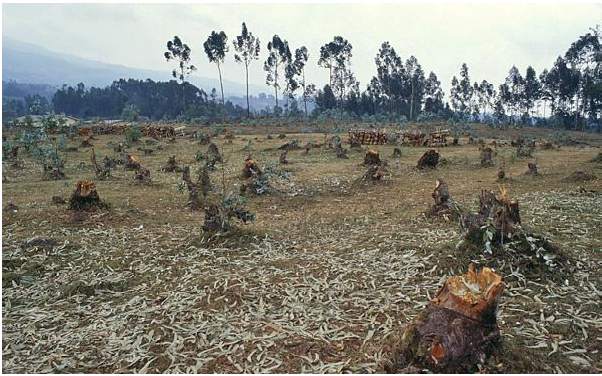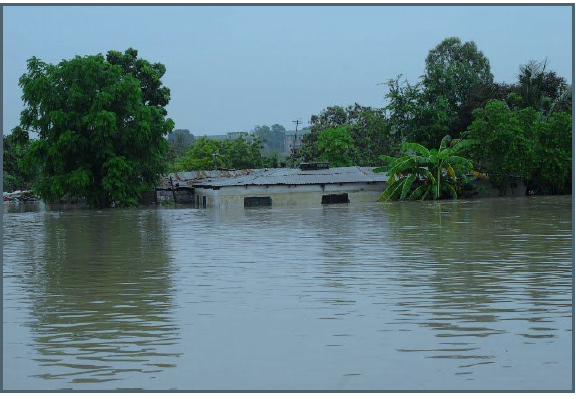CLIMATE AND NATURAL REGION
World Climatic Types and their Characteristics
How different Geographical Factors Influence Climate
Explain how different geographical factors influence climate
Usually,
the elements of weather (which make up climate) vary from place to
place. In the lesson on weather we learned about the elements of
weather. Because climate is influenced by weather, the elements of
weather are the same as the elements of climate. Therefore, the factors
that cause variation in weather elements will likewise influence the
climate. The factors influencing climate and weather are discussed below
Latitude
This
factor influences temperature and rainfall. Areas around and close to
the equator experience higher temperature and receive higher rainfall
than those farther away. So the rainfall and temperature decreases as
one moves away from the equator.
The
amount of heat received at any place on the earth’s surface depends on
the angle at which the sun’s rays strike the surface of the earth and
the duration of the sunshine. At the equator, the sun’s rays fall on the
Earth’s surface at almost right angles throughout the year, but the
angle at which the sun’s rays strike the Earth’s surface decreases as
one moves towards the poles.
Therefore,
temperatures decrease with increase in latitude because the equator
receives vertical rays of sunlight while the north and the south poles
receive slanting rays. Because of this fact, the equator and places near
the equator are hotter while places in or near the south and north
poles are colder.
Altitude
This
influences temperature and atmospheric pressure of an area. Temperature
decreases with increasing altitude at the rate of 0.6°C for every 10
metres rise in altitude. Therefore, low-altitude areas are warmer than
high altitude areas. Atmospheric pressure decreases with increasing
altitude. Pressure at sea level is higher than pressure at the summit of
a high mountain.
Ocean currents
The
nature of the ocean current influences the temperature of the wind
blowing over it and transfers this influence to the land adjacent to the
ocean. This will either lead to reduction or increase in the
temperature of the land depending on the type of the ocean current. The
wind blowing over warm ocean currents will pick moisture from the ocean
and often causes heavy rainfall over the land while the wind blowing
over the cold ocean current brings little or no rainfall to the land.
Distance from the sea
This
influences temperature and rainfall. Places located near the sea
experience high temperature and receive high rainfall than those located
farther away. This is because of high rates of evaporation from the
water surface, which eventually causes heavy rainfall along the coastal
areas. For this reason, coastal regions often experience higher
temperatures and rainfall than inland areas.
Aspect
This
term refers to the direction in which a slope faces. It influences
temperature and rainfall. For example, the south facing slopes in the
northern hemisphere are always warmer than the north-facing slopes. Also
the windward side of the mountain receives heavier rainfall than the
leeward side.
Wind and air masses
Wind
carries moisture with it as it flows. Warm wind blowing over a cold
region warms the cold region over which it flows. However, if the wind
is cold, it cools the region.
Warm,
moist wind blowing towards a cold, dry region may lead to formation of
rainfall in the destination region. Cold, dry wing blowing over a dry
region brings no rainfall and if the blowing is repeated over several
years, it may cause aridity in that region.
Alignment of the coastline
This
refers to the arrangement of the region’s coastline in relation to the
direction of the wind. If the winds blow across the coastline they cause
rainfall. If they blow in parallel to the coastline, they cause
drought.
Intertropical Convergence Zone (ITCZ)
This
is a low-pressure area around the equator. The moist winds meet within
this region. Places farther away from this zone experience only one
rainy season while places close to the zone experience two seasons of
heavy rainfall. This is because the winds converge around this region
twice a year.
Forests
Areas
covered with forests normally receive high rainfall as compared to
those with little or no vegetation. This is because of high rates of
evaporation and transpiration, leading to high humidity. Therefore,
these areas often, receive high amounts of rainfall and have a modified
climate.
Human activities
A
range of human activities such as agriculture, mining, transportation,
construction, etc affects the climate. For instance, clearing of the
forests to get land for agriculture and settlement leads to the loss of
biodiversity, making the land arid and unproductive.
The impact of climate
Climate
has many impacts to human activities. Various economic activities
conducted by man in different parts of the world are governed by the
type of climate experienced in a particular region. For example, people
living in deserts and semi-arid regions do not practice much agriculture
because their environment does not favour crop cultivation or animal
husbandry. In these regions, however, a very limited agriculture and
animals rearing is conducted. The animals kept include camels, goats,
sheep, donkeys and other4hardy animals. Only drought resistant crops
such as dates are grown in deserts and arid areas.
In
tropical and equatorial regions, a lot of agriculture is carried out.
The inhabitants of these regions take part in cultivation of crops and
keeping of animals. Crops grown include cocoa, banana, horticultural
crops and grains. The animals kept in these climatic zones include
cattle, pigs, donkeys, horses, poultry and other farmyard animals.
Specific types of various economic activities carried out in each
climatic region will be discussed in detail in the section below.
Natural Regions of the World
A World Map Showing Different Natural Regions
Draw a world map showing different natural regions
Activity 1
Draw a world map showing different natural region
The Relationship between Human Activities and Climate
Explain the relationship between human activities and climate
Human
activities are human undertakings which are done to earn a living, they
include, fishing, lumbering, hunting and gathering and manufacturing.
Climate influences human activities directly.E.g In agriculture,
different crops have different requirements of temperature and rainfall
as the major climatic element. Therefore it is not advisable to
cultivate permanent crops in deserts.
Ways of Solving Climatic Problems
Propose ways of solving climatic problems
There
are natural and man-made causes of climatic change that bring about
climate problems. There are possible solutions to climatic problems such
as:
- education,
- avoidance of bad methods of farming,
- application of good farming methods,
- application of appropriate technologies,
- land reforms,
- afforestation,
- laws and rules,
- as well as the reduction of carbon dioxide emissions from industries.



No comments